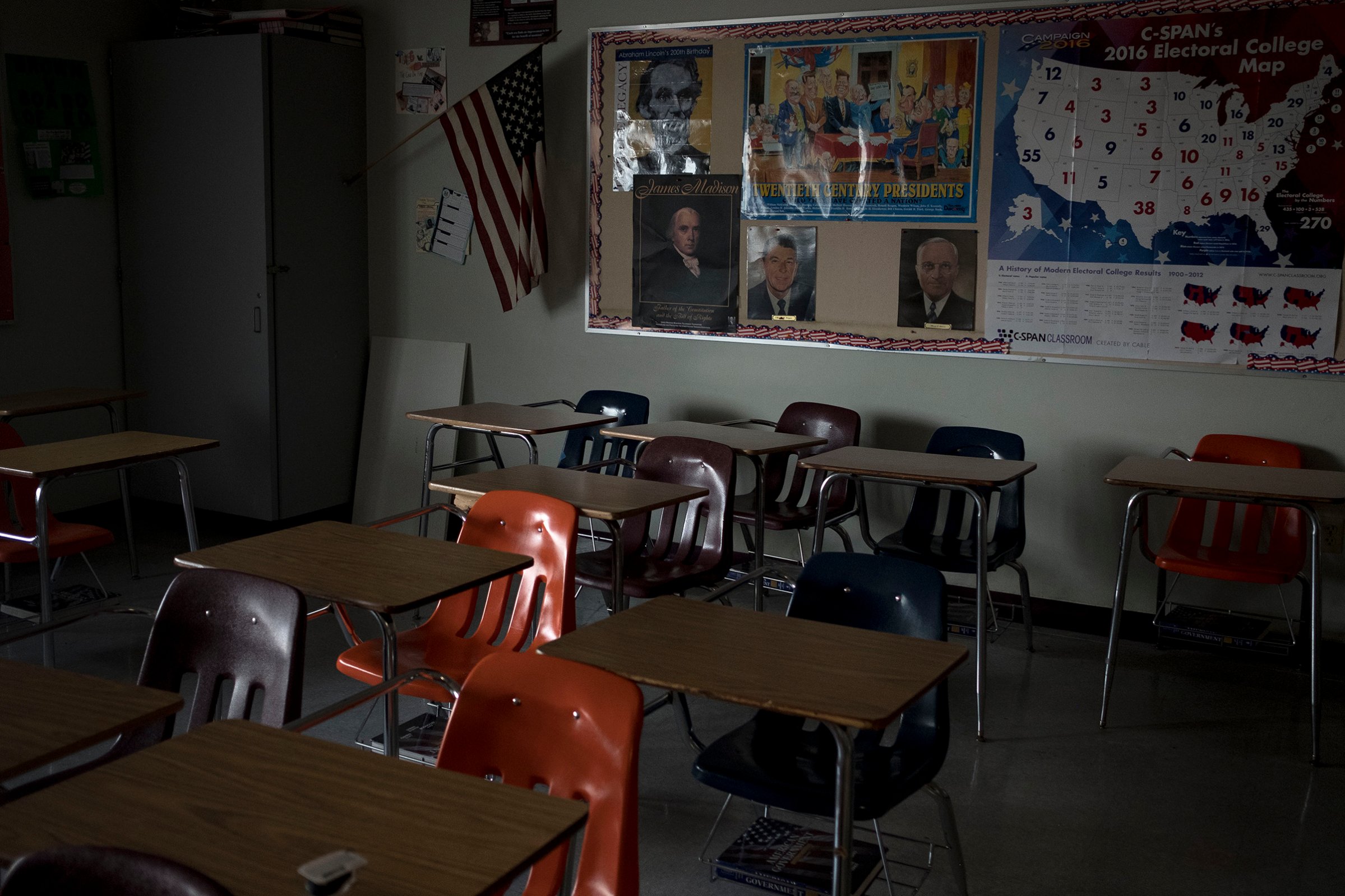
Maybe you don’t want to read a novel about a school shooting; many people wouldn’t. But if you are open, or even eager, to see how fiction can process one of the more painful elements of contemporary American society, two new novels are at hand.
The first is Rhiannon Navin’s Only Child, which, like Emma Donoghue’s Room, is a book for adults as told from the perspective of a child living through something terrible. The main character is first-grader Zachary Taylor. On page 1, we find him hiding inside his classroom’s closet with his teacher and peers while a shooter rampages–a tableau reminiscent of Sandy Hook. On page 28, we learn that Zach’s older brother Andy is dead. His parents are so traumatized by their loss that they can hardly help their young son cope with his PTSD, which leads to bed-wetting, violent nightmares and uncharacteristic tantrums. Navin skillfully inhabits the consciousness of one too young to understand: the night after the shooting, looking at the family calendar, Zach thinks, “Yesterday we did all the things we do every Tuesday, because we didn’t know that today a gunman was going to come.”
The shooter is a troubled young man, but Navin complicates the situation by giving Andy a history of serious behavioral problems himself. After Andy dies, Zach expects family life to improve; maybe his family will stop fighting all the time. Andy’s backstory elevates the book above a sob story–but redemption, recovery and hope remain the name of the game.
For a grittier take, there’s Tom McAllister’s How to Be Safe. Advance copies arrived months ago, and I had just finished reading the book when the shooting happened at Marjory Stoneman Douglas High School in Parkland, Fla. The parallels are chilling: in the book, an angry young man returns to his old school, pulls a fire alarm to sow confusion and opens fire, killing 19.
The focus this time is on a teacher. Anna Crawford is actually at home the day of the shooting; she has been suspended for strange outbursts in the classroom. The shooter initially evades arrest, and Anna’s suspension from work leads law enforcement to take her into custody as a suspect. Once proved innocent, she returns to her ransacked home to pass the days unemployed, depressed and usually drunk. But as unhinged as Anna is, she seems to be the only one who gets it. When the shooter’s manifesto surfaces, she describes it as “depressing in its banality, in its adolescent conviction that he’d discovered some grand truth about how people are phonies … how the world is mostly about pain. As if we didn’t all know this, as if we also weren’t trying to find ways to deal with it that didn’t involve murder.”
How to Be Safe resists the hopeful messaging found in Only Child; Anna sees that something is rotten in these United States, and she refuses to gloss over it. When a journalist visits and asks what “lessons” the citizens have learned from the ordeal, Anna muses on the idiocy of the question: “Lessons. As if we’d just graduated and become American grownups because we’d finally bathed in the blood of our neighbors.”
Anna is messy, intelligent, absurd, rude; you might even say distasteful. You could not call this a pleasant novel. But its brutal honesty befits the times.
More Must-Reads from TIME
- Cybersecurity Experts Are Sounding the Alarm on DOGE
- Meet the 2025 Women of the Year
- The Harsh Truth About Disability Inclusion
- Why Do More Young Adults Have Cancer?
- Colman Domingo Leads With Radical Love
- How to Get Better at Doing Things Alone
- Michelle Zauner Stares Down the Darkness
Contact us at letters@time.com